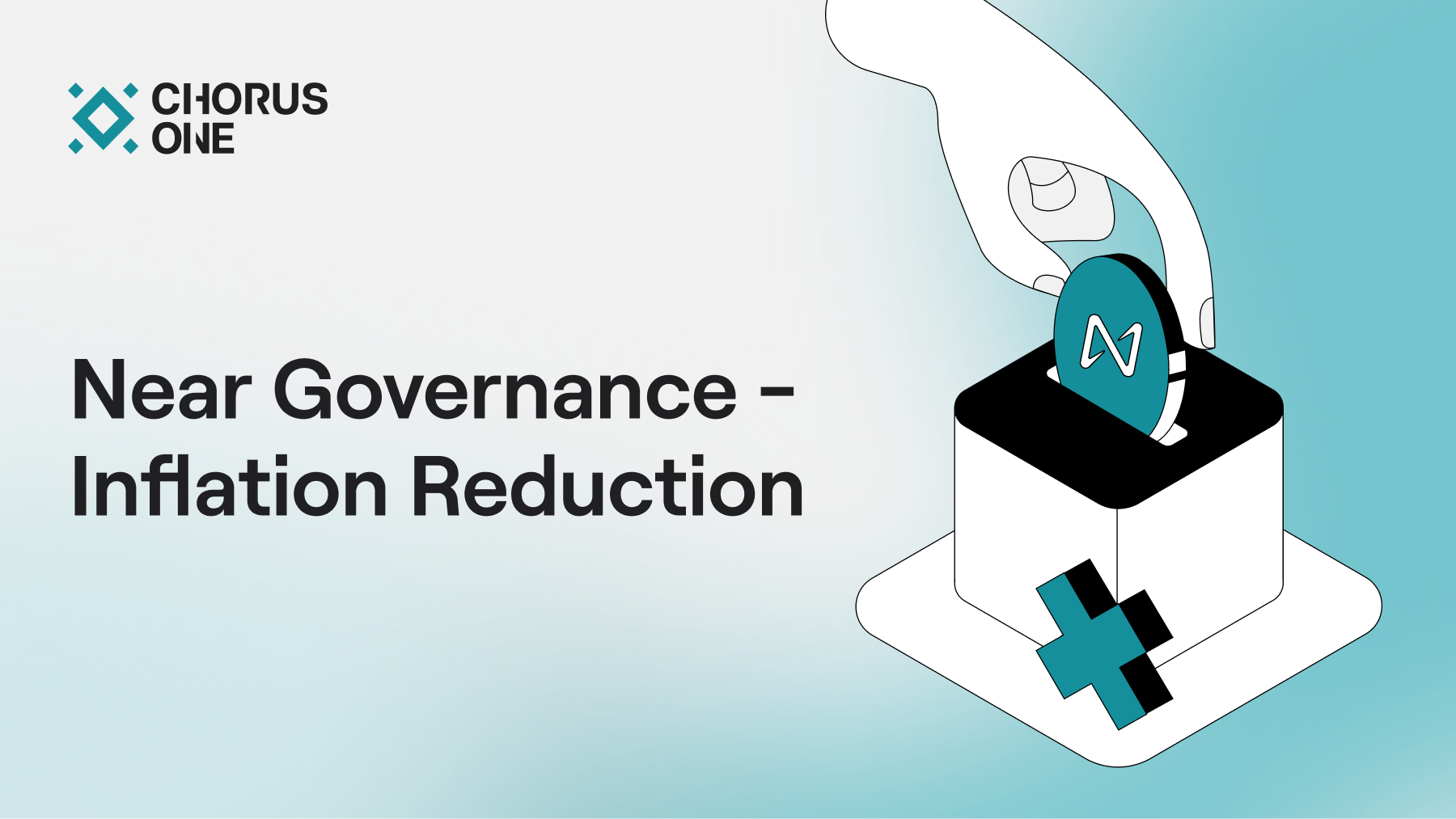
A recent proposal from HOTDAO and LiNEAR went live, it suggests cutting NEAR inflation in half. from 5% to 2.5%, which would reduce the annual staking rate to ~4.75% assuming the same staking ratio.
Chorus One has been a validator on NEAR for ±2 years, and one of the most active in terms of governance in PoS networks. We wanted to share some thoughts and feedback around the proposal and its implications for various ecosystem participants. In summary, we acknowledge the motivation and some of the benefits behind reducing base staking rewards, but our view is that the NEAR ecosystem is still too nascent to implement such a drastic change without sufficient time for community discussion. We suggest alternative measures that work towards the same goal, and welcome open feedback from the community.
The primary motivation behind, as stated in the proposal, is to move towards more sustainable economics, as well as incentivizing DeFi participation on NEAR. We previously conducted a similar analysis on SIMD228 and found no definitive conclusion on TVL elasticity towards inflation. For newer ecosystems, this argument should be much weaker as the network has not reached a point where there's sufficient organic economic activity. NEAR’s top 3 LSTs, for instance, only have a combined 1.1% penetration rate.
Despite NEAR’s growth over the past years, the network’s fee generation remains modest relative to its inflation rate. The DeFi ecosystem, while promising, is still maturing and has yet to generate sufficient economic activity to offset a sharp reduction in staking rewards. This is in contrast to mature networks like Solana, which recently also had a proposal that failed to pass, discussing adjusting inflation to a variable rate based on staking participation, which lowers base inflation when staking rates are higher and vice versa. For context, the average monthly Real Economic Value (REV) on Ethereum in H2 2025 was approximately $69.53 million, and Solana averaged $181.8 million. In contrast, Near had around $1.6 million in fees generated, about 43× less than Ethereum and 114× less than Solana. Near’s annual staking reward rate would be lower than Solana’s despite having less economic activity and only marginally higher than Ethereum’s. We are concerned that this disparity could drive stakers to other ecosystems in search of higher rewards and economic activity, ultimately negatively impacting Near.
NEAR currently has 100 active validators proposing blocks, but the top 11 control 33% of the network’s stake. The proposed halving of staking rewards could disproportionately impact smaller validators leading to even more centralization, we’d like to see more initiative on how this would aim to be addressed before. It was mentioned that some modelling and calculations were done around this proposal, we’d love to see the numbers and analysis behind.
Rather than primarily cutting inflation and focusing on the supply side, fostering a vibrant ecosystem through liquid staking and incentivizing active chain usage and the demand side may be more effective. As aforementioned, despite a high inflation rate, LSTs only have 1.1% penetration, which could imply a lack of productive use cases in the ecosystem. Encouraging more on-chain activity and DeFi innovation can organically enhance token value and network health without risking validator attrition.